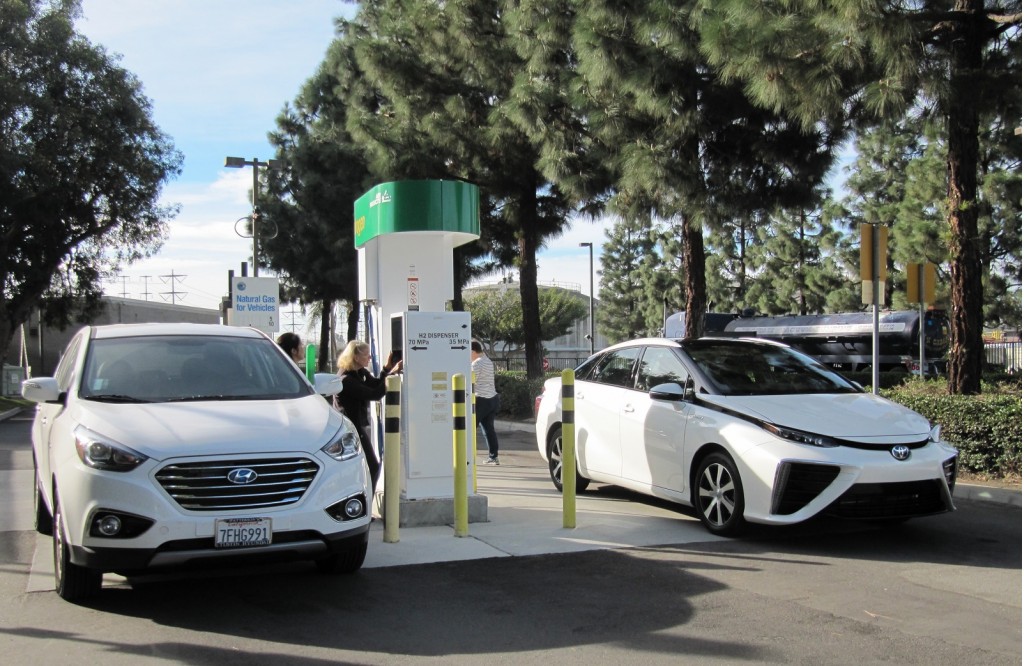What's so magical about 1.5 volts, you may ask?
It turns out that it's the practical voltage required to produce hydrogen gas from water using artificial photosynthesis, powered only by solar energy, at commercial scale.
At least, that's the claim of a startup company called Hypersolar, which two days ago said it had reached a new milestone of 1.4 Volts.
DON'T MISS: 2016 Toyota Mirai Fuel-Cell Sedan: 312 Miles Of Range, 67 MPGe
That's higher than the 1.25 Volts that represents the theoretical minimum voltage needed to split water molecules into hydrogen and oxygen.
Using a photosynthesis-like process would vastly reduce the carbon footprint of hydrogen used as a vehicle fuel by cars, including the current Hyundai Tucson Fuel Cell and the upcoming 2016 Toyota Mirai.
Most commercial hydrogen today is produced using natural gas as a feedstock, and requires a significant investment of energy.

University of Iowa researchers working with HyperSolar on hydrogen production via photosynthesis
A byproduct of reforming the hydrogen from hydrocarbon fossil fuels is the production of carbon dioxide, a greenhouse gas.
Hypersolar believes it can develop "a low-cost and submersible hydrogen production particle."
ALSO SEE: 2016 Toyota Mirai: First Drive Of Hydrogen Fuel-Cell Sedan (Dec 2014)
That particle contains a novel high-voltage solar cell bonded to chemical catalysts by a proprietary encapsulation coating, forming a complete hydrogen generator.
If successful, it says, the process will be able to split water molecules using only the power of the sun, emulating photosynthesis.

2016 Toyota Mirai hydrogen fuel-cell car, Newport Beach, CA, Nov 2014
Hypersolar has been working with a research team at the University of Iowa, which had previously met the 1.25-Volt goal and is now on its way to 1.5 Volts.
The company called the 1.4-Volt level a "major milestone," and intends to get to 1.5 Volts using a new low-cost process identified by the Iowa team that replaces the conventional but expensive vapor-deposition process used in fabricating the solar cells.
MORE: Second Toyota Mirai Video: Hydrogen Is Like First Oil Well
Lowering that cost, Hypersolar says, lets the company focus on a prototype for a self-contained sun-powered hydrogen production unit.
That prototype, in turn, would provide the basis for further work to develop large-scale manufacturing processes that could produce hydrogen economically with a far lower carbon footprint.
CHECK OUT: Hyundai On Hydrogen Fuel-Cell Vehicles: Critiquing Its Claims (Feb 2014)
"We are confident that the recent breakthroughs will bring us significantly closer to building cost-effective real world systems for producing hydrogen at or near the point of distribution," said HyperSolar CEO Tim Young, "using only water and the power of the sun."
The company works with research teams at both the University of Iowa and the University of California, Santa Barbara.
_________________________________________________













